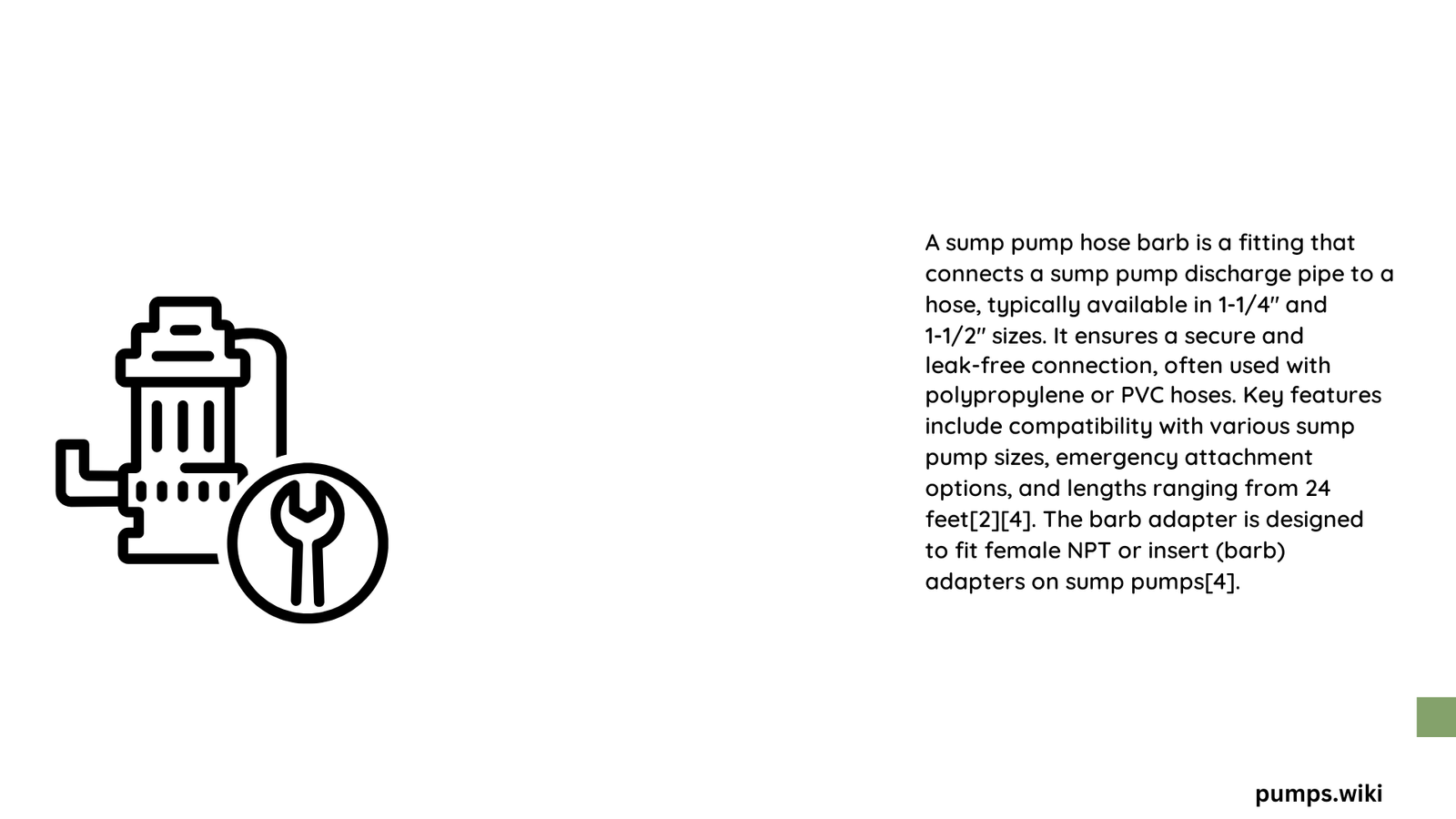A sump pump hose barb is a critical component in water drainage systems, connecting sump pumps to discharge hoses. These specialized fittings ensure efficient water removal by providing a secure, leak-resistant connection between the pump and drainage pipe. Understanding their specifications, materials, and installation requirements is essential for preventing basement flooding and maintaining proper water management.
What Are Standard Sizes for Sump Pump Hose Barbs?
Sump pump hose barbs come in various sizes, with the most common diameters ranging from 1.25 to 2 inches. The size directly impacts water flow and pump efficiency.
Key Size Considerations
| Hose Barb Size | Typical Flow Rate | Recommended Pump Capacity |
|---|---|---|
| 1.25 inches | 40-50 GPM | 1/3 HP Pump |
| 1.5 inches | 50-60 GPM | 1/2 HP Pump |
| 2.0 inches | 60-75 GPM | 3/4 HP Pump |
Why Material Selection Matters for Sump Pump Hose Barbs?

Pros and Cons of Different Materials
PVC Hose Barbs
- Advantages:
- Lightweight
- Cost-effective
- Corrosion-resistant
- Disadvantages:
- Less durable
- Brittle in extreme temperatures
Brass Hose Barbs
- Advantages:
- High durability
- Temperature resistant
- Long-lasting performance
- Disadvantages:
- More expensive
- Heavier than PVC
Stainless Steel Hose Barbs
- Advantages:
- Extremely durable
- Corrosion-proof
- High-pressure tolerance
- Disadvantages:
- Most expensive option
- Significant weight
How to Choose the Right Sump Pump Hose Barb?
Factors for Selection
- Pump Discharge Port Size
- Match hose barb diameter exactly
- Prevents flow restrictions
-
Ensures maximum pump efficiency
-
Environmental Conditions
- Consider temperature ranges
- Assess potential chemical exposures
-
Select material accordingly
-
Budget Constraints
- Balance quality with affordability
- Consider long-term durability
What Installation Techniques Ensure Proper Sump Pump Hose Barb Connection?
Best Practices
- Use appropriate hose clamps
- Apply thread tape for threaded connections
- Check for secure, leak-free attachment
- Verify alignment and minimal resistance
Cost Considerations for Sump Pump Hose Barbs
Price Range by Material
- PVC: $5 – $20 per fitting
- Brass: $10 – $50 per fitting
- Stainless Steel: $20 – $100 per fitting
Maintenance Tips for Longevity
- Inspect connections annually
- Clean and lubricate fittings
- Replace worn components promptly
- Monitor for signs of corrosion or damage
Common Mistakes to Avoid
- Mismatched sizing
- Improper installation
- Neglecting regular maintenance
- Using low-quality materials
Troubleshooting Sump Pump Hose Barb Issues
- Check for leaks
- Verify tight connections
- Inspect for material degradation
- Replace if signs of wear appear
Expert Recommendations
- Consult professional plumbers
- Consider specific home drainage needs
- Invest in quality components
- Prioritize proper installation
Conclusion
Selecting the right sump pump hose barb involves understanding size, material, and installation requirements. Careful consideration ensures effective water management and prevents potential basement flooding.
